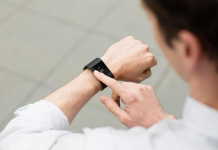In a world where the internet has become an essential part of everyday life, millions of Americans still find themselves on the wrong side of the digital divide. The lack of access to stable, high-speed internet can prevent many people from getting access to a lot of opportunities, whether it’s education, job opportunities, healthcare, or even basic services.
The Biden Administration has always been keen on addressing this problem ever since they took office, and recently, the White House has launched a groundbreaking initiative aimed at providing universal high-speed broadband access across the US by 2030. Let’s explore more about this initiative and its potential impact on the lives of millions of Americans.
The Ongoing Challenge of Digital Divide in the US
As the world becomes increasingly interconnected through the internet, millions of Americans still face limited or no access to high-speed broadband services. Satellite internet has always been deemed as the solution for connectivity in rural areas, but there is still a significant percentage of the US population that isn’t connected to the internet.
The digital divide disproportionately affects rural areas and low-income communities, where the cost of broadband infrastructure deployment is often deemed unprofitable by internet service providers. As a result, these regions are left behind, lacking the vital infrastructure needed to participate fully in the digital economy.
Where Is the $42 Billion Initiative Going?
This ambitious $42 billion program, known as the Broadband Equity Access and Deployment Program, is part of President Joe Biden’s economic policies to address infrastructural gaps and boost connectivity nationwide. It is a significant component of the $1 trillion 2021 infrastructure law championed by President Biden.
This law lays the groundwork for the program’s funding that aims to bring high-speed broadband access to every corner of the nation. So that may mean that fiber internet will be widely available in the US in the near future. The allocation of $42 billion has been carefully planned to ensure that all 50 states and U.S. territories benefit from the initiative, with each state receiving a minimum of $107 million. However, California and Texas will receive the highest funding, with amounts of $1.9 billion and $3.1 billion, as they are two of the most populous states in the country.
Encouraging Internet Providers to Invest in Underserved Areas
While the Broadband Equity Access and Deployment Program present a remarkable opportunity to address the digital divide, it also faces challenges related to encouraging broadband companies to invest in underserved areas. Historically, these companies have been hesitant to invest in rural and less populated regions due to the perceived lack of profitability.
However, the substantial funding provided by the program serves as a powerful incentive for every internet provider to reconsider their investment strategies. With the government’s financial support, these companies can expand their networks to previously unprofitable areas, extending high-speed broadband access to communities that have long been left without reliable connectivity.
The Potential Impact of Universal Internet Access
The impact of the Broadband Equity Access and Deployment Program extends beyond mere connectivity. It has the potential to transform lives, empower communities, and drive economic growth and innovation. As the program unfolds over the next decade, its impact will be felt across various sectors:
- Education – Universal internet access will ensure that every student has an equal opportunity to access educational resources, participate in virtual classrooms, and engage in online learning. This, in turn, can lead to improved academic outcomes and better preparation for future career opportunities.
- Economic Growth – High-speed broadband access can revitalize local economies by attracting businesses, stimulating job growth, and encouraging entrepreneurship. With improved connectivity, small businesses in underserved areas can expand their customer base and compete on a larger scale.
- Healthcare Access – Telemedicine will become more accessible to individuals in remote areas, enhancing healthcare access and outcomes. Patients can receive timely medical consultations and critical healthcare services without the need for long-distance travel.
- Social Inclusion – Universal internet access can foster social inclusion and digital participation, enabling individuals to connect with friends, family, and community support services online.
- Emergency Response – Reliable internet connectivity will enhance emergency response capabilities, ensuring effective communication and coordination during crises and natural disasters.
Wrapping Up
The Broadband Equity Access and Deployment Program is excellent news for every American. It can bridge the digital divide in the US once and for all, and we will all have equal opportunities to create a better life. By embracing the potential of universal internet access, the US sets a powerful example for the rest of the world.




































 Online casino
Online casino
